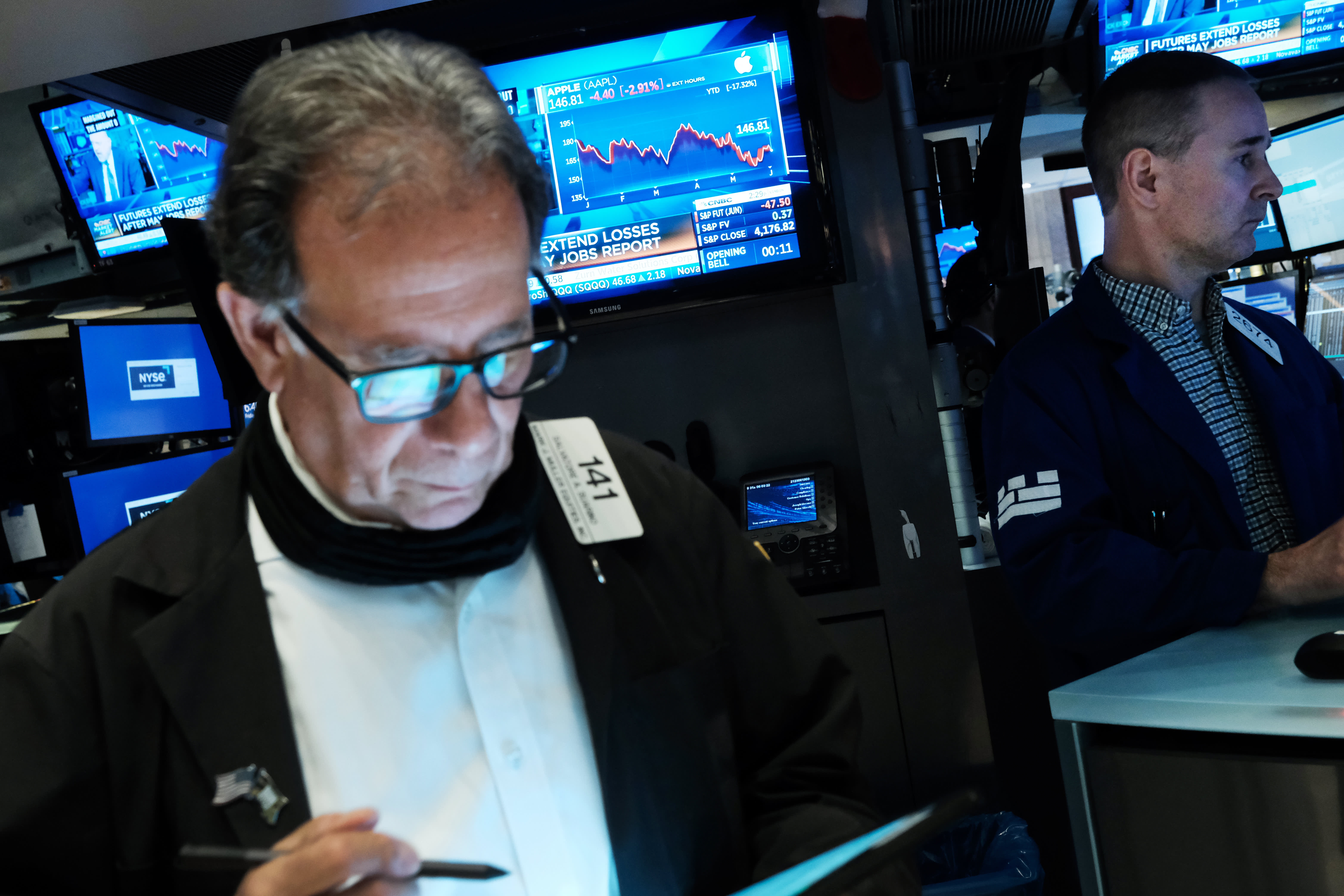
Stocks sold off Monday, pushing the S&P 500 to a fresh 2022 low and back into bear market territory, as recession fears grew ahead of a key Federal Reserve meeting this week.
The Dow Jones Industrial Average dropped 740 points, or about 2.3%, the S&P 500 fell 3.1% and the Nasdaq Composite tumbled 3.9%.
The moves came as investors continued to digest a hotter-than-expected inflation report on Friday and braced for the Fed to raise rates later in the week.
“It tells me that there’s a buyers’ strike and with that [CPI] print you have people that are obviously selling but no one is stepping in to buy,” said Keith Lerner, Truist’s co-chief investment officer.
The S&P 500 on Monday hit a new intraday low for the year and its lowest level since March 2021. The benchmark is more than 20% from its record, back in bear market territory after trading there briefly on an intraday basis about three weeks ago.
Data from Bespoke Investment Group shows that since World War II there have been 14 bear markets on a closing basis and on average, the S&P 500 has pulled back a median of 30%, with the downturn lasting a median of 359 days.
Loading chart…
“The odds of a ‘June Swoon’ straight to 3,400 have gone up significantly, in our view,” wrote Jonathan Krinsky, technical analyst for BTIG.
“We thought a momentum reversion where winners got bought and losers sold would create chop at the index level, but last week is a reminder that the risk continues to be to the downside,” Krinsky added.
Monday’s sell-off was broad-based, with just 15 S&P 500 components trading higher. Decliners at the New York Stock Exchange also outpaced advancers 21-1.
The moves could indicate that many investors are profit-taking or repositioning their portfolios, and may signal that markets are in “a capitulation stage,” said Jeff Kilburg, chief investment officer of Sanctuary Wealth.
Shares of Boeing, Salesforce and Dow fell more than 8%, 5% and 3%, respectively, dragging down the Dow. Beaten-up tech shares also took a hit with Netflix, Amazon and Nvidia down more than 5% as the Nasdaq touched a fresh 52-week low and its lowest level since November 2020.
Travel stocks also slipped on Monday, with Carnival Corporation and Norwegian Cruise Line down about 9% and 11%, respectively. Delta Air Lines fell about 7% and United tumbled 8%.
All major S&P 500 sectors dipped into the red, with energy and consumer discretionary down more than 4%. Real estate and materials also slipped about 3%.
Amid the sell-off, Lerner recommends investors continue to maintain a “defensive posture” in areas like consumer staples and health care. These stocks may not post big gains but can outperform relative to other sectors, he said.
Meanwhile, short-term rates jumped, with the 2-year Treasury yield rising by 17 basis points to more than 3.22% and reaching its highest level since 2007 as investors bet the Fed may have to get more aggressive to squash inflation. At one point in the session, the 2-year rate traded above its 10-year counterpart for the first time since April, a so-called yield curve inversion seen as an indicator of a recession.
Monday’s moves came after the major averages last week posted their biggest weekly declines since late January as investors grew increasingly concerned rising inflation will tip the economy into a recession.
The Bureau of Labor Statistics reported Friday that the U.S. consumer price index rose last month by 8.6% from a year ago, its fastest increase since December 1981. That gain topped economists’ expectations. The so-called core CPI, which strips out food and energy prices, also came in above estimates at 6%.
Gasoline prices topped $5 a gallon over the weekend, further fanning fears over rising inflation and falling consumer confidence.
Bitcoin tumbled below $24,000 on Monday and hit its lowest level since 2020 as risk-averse investors continued to dump crypto as rates rise. Crypto-related companies including Coinbase and Microstrategy slipped about 8% and 18%, respectively, amid the news.
“The cryptocurrency bitcoin has been a great gauge of investors’ risk threshold for equities,” wrote JC O’Hara, chief market technician at MKM Partners. “Plenty of longs who bought in last year are still trapped, and thus we could easily see a pullback to 19,500. That would be a bearish read through for stocks.”
The Fed is expected to announce at least a half-point rate hike on Wednesday. The central bank has already raised rates twice this year, including a 50-basis-point increase in May in an effort to stave off the recent inflation surge.
Following Friday’s CPI report, some economists believe the Fed could even raise rates by 0.75% this week.
Subscribe to CNBC PRO for exclusive insights and analysis, and live business day programming from around the world.

